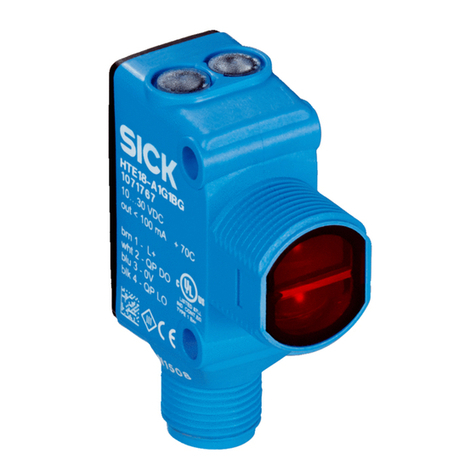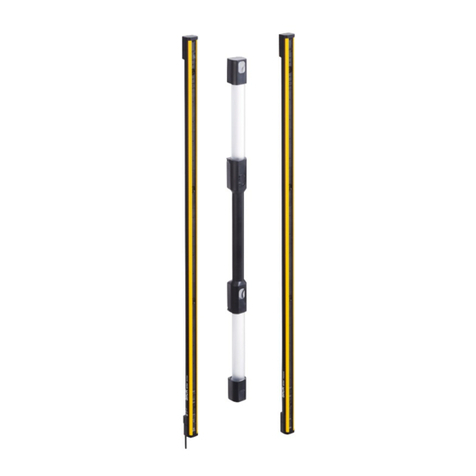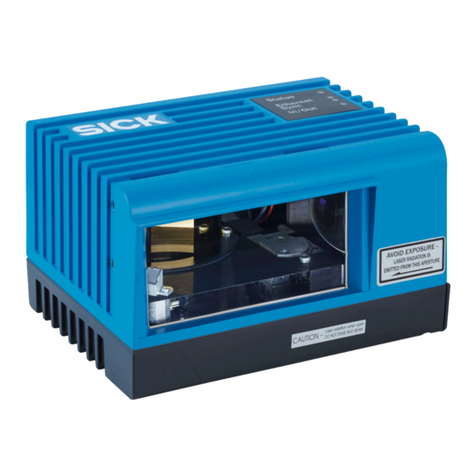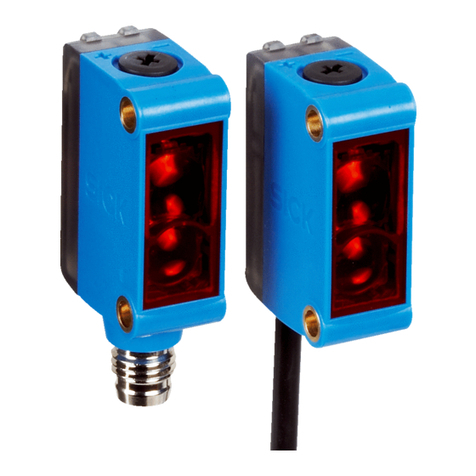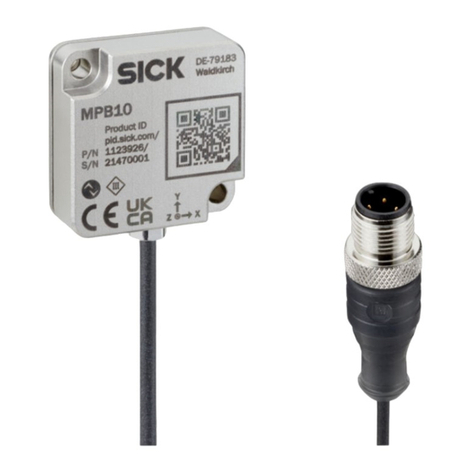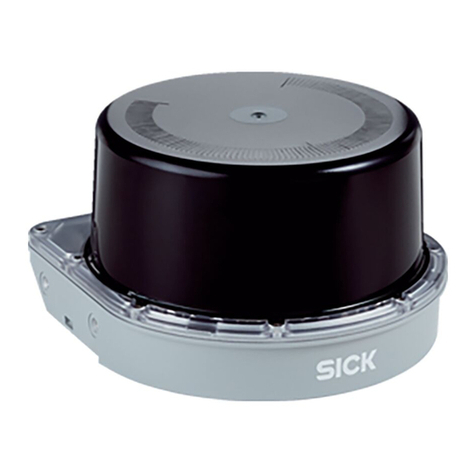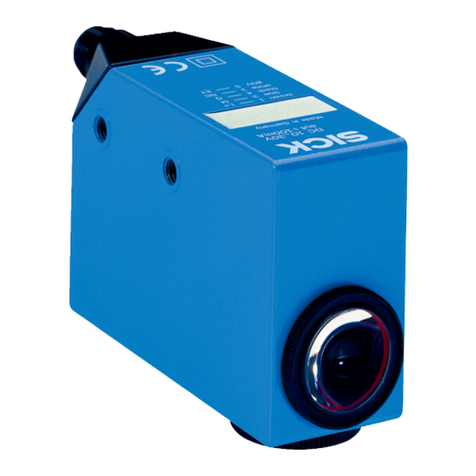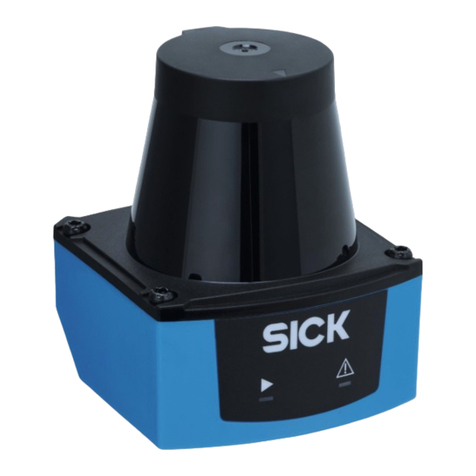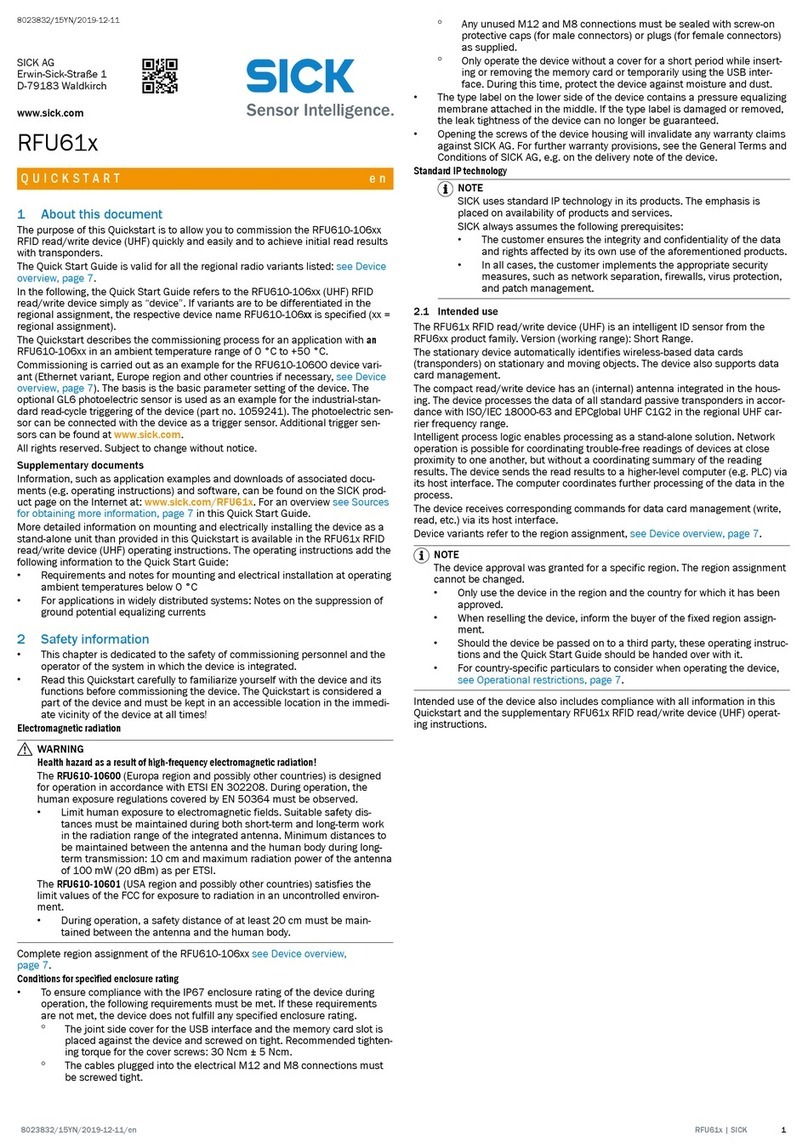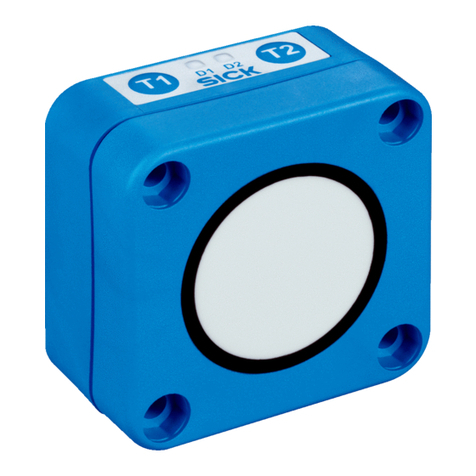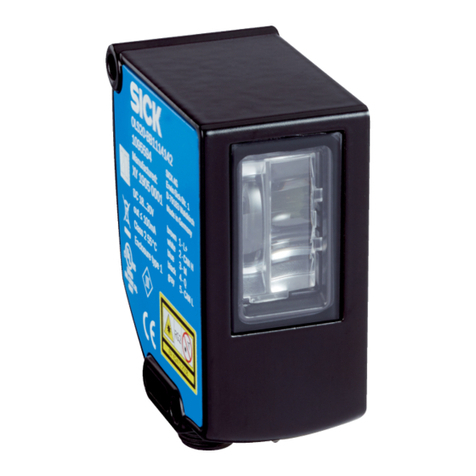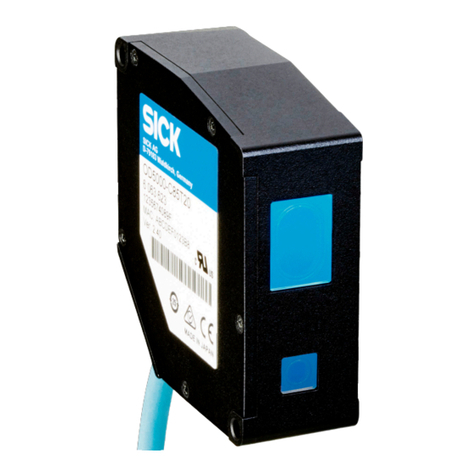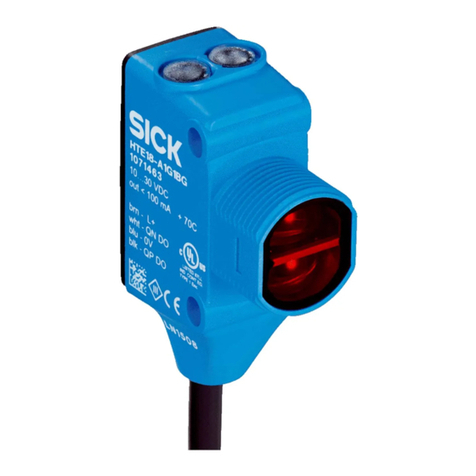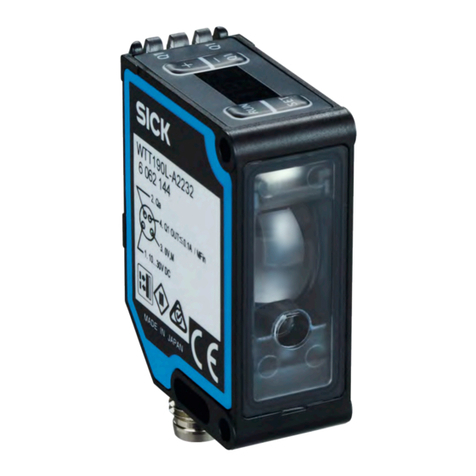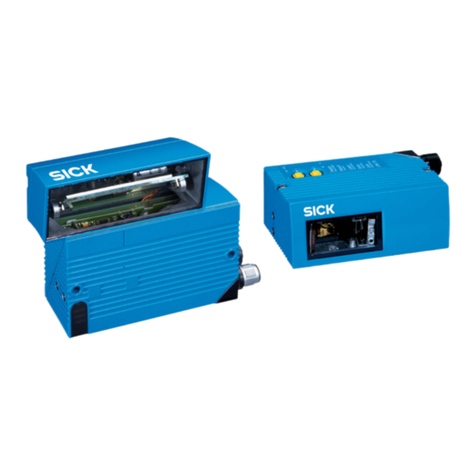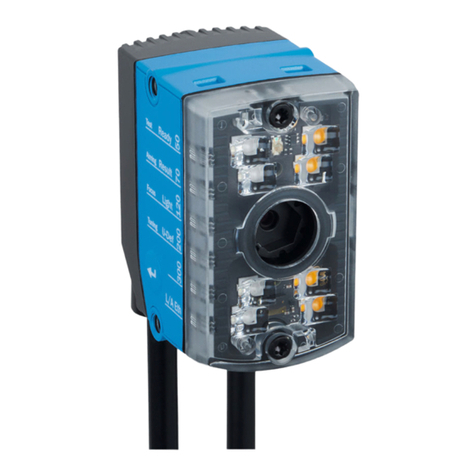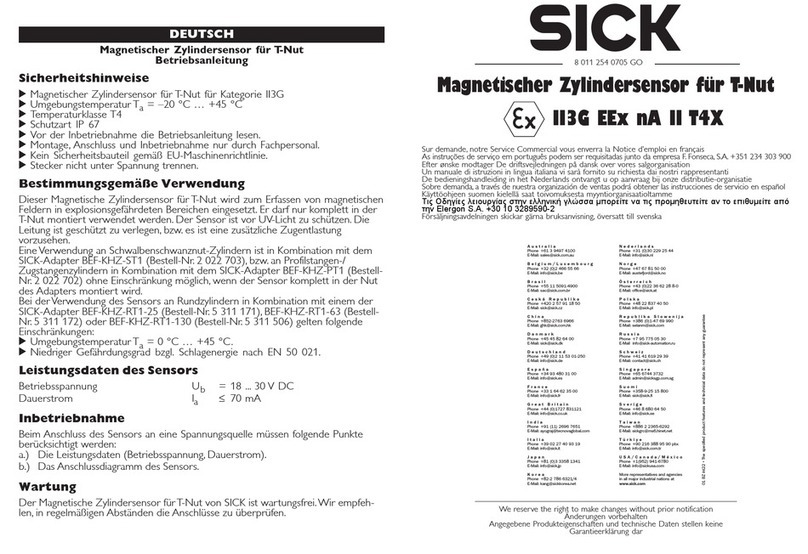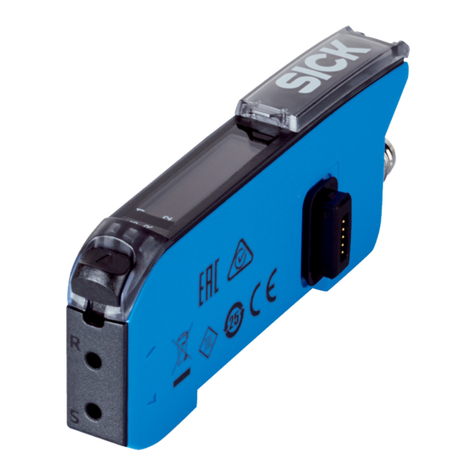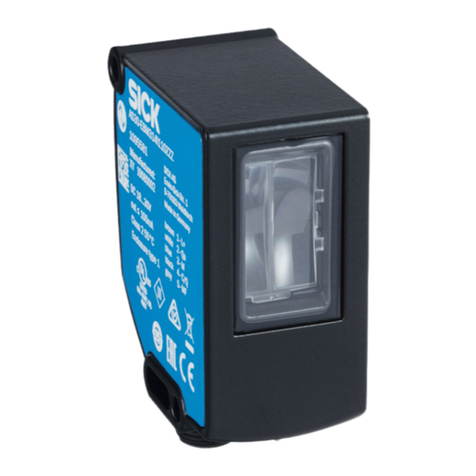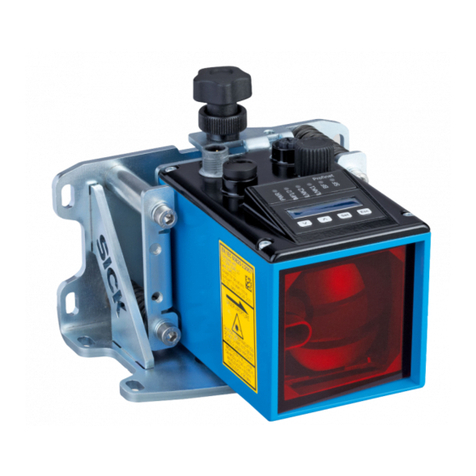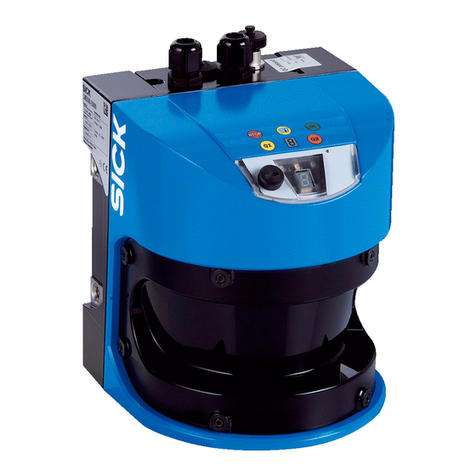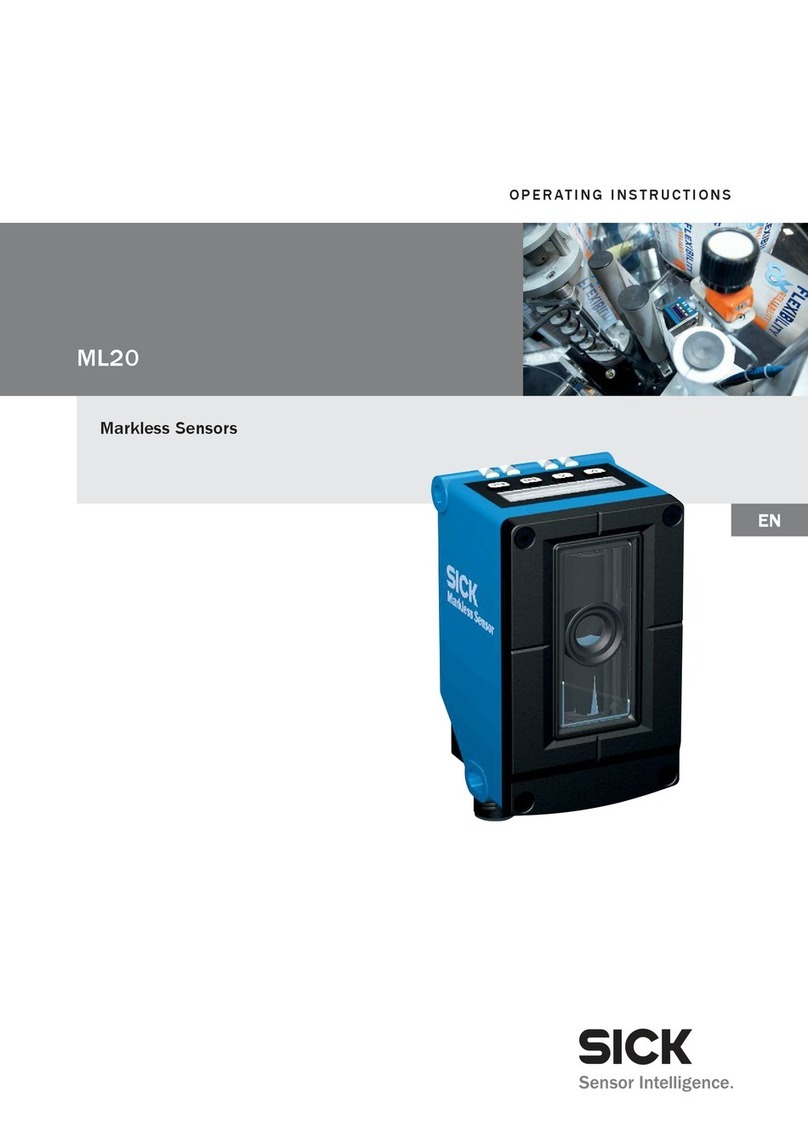
7 Table : Fault diagnosis
LED indicator/fault pattern /
LED indicator/fault pattern
Cause /
Cause
Measures /
Measures
Green LED does not light up /
Green LED does not light up
No voltage or voltage below
the limit values /
No voltage or voltage below
the limit values
Check the power supply,
check all electrical connec‐
tions (cables and plug connec‐
tions) /
Check the power supply,
check all electrical connec‐
tions (cables and plug connec‐
tions)
Green LED does not light up /
Green LED does not light up
Voltage interruptions /
Voltage interruptions
Ensure there is a stable power
supply without interruptions /
Ensure there is a stable power
supply without interruptions
Green LED does not light up /
Green LED does not light up
Sensor is faulty /
Sensor is faulty
If the power supply is OK,
replace the sensor /
If the power supply is OK,
replace the sensor
Green LED lights up, no output
signal when object is
detected /
Green LED lights up, no output
signal when object is detected
Test input (TI) is not con‐
nected properly /
Test input (TI) is not con‐
nected properly
See the note on connecting
the TI /
See the note on connecting
the TI
Green LED flashes /
Green LED flashes
IO-Link communication /
IO-Link communication
-
Switching outputs not accord‐
ing to graphic C /
Switching outputs not accord‐
ing to graphic C
IO-Link communication /
IO-Link communication
-
Switching outputs not accord‐
ing to graphic C /
Switching outputs not accord‐
ing to graphic C
Parameter settings made
manually, which deviate from
the standard /
Parameter settings made
manually, which deviate from
the standard
Initiate a factory reset. The
switching outputs are reset to
factory settings. /
Initiate a factory reset. The
switching outputs are reset to
factory settings.
Yellow LEDs flash at the same
time /
Yellow LEDs flash at the same
time
The sensor is not ready for
operation. The sensor will be
in the warming-up phase at
low ambient temperatures.
The sensor will have shut
down at excessively high
ambient temperatures. /
The sensor is not ready for
operation. The sensor will be
in the warming-up phase at
low ambient temperatures.
The sensor will have shut
down at excessively high
ambient temperatures.
At low ambient temperatures,
wait until the sensor has
warmed up. Ensure the sensor
cools down at excessively high
ambient temperatures. /
At low ambient temperatures,
wait until the sensor has
warmed up. Ensure the sensor
cools down at excessively high
ambient temperatures.
Yellow LED flashes (only
briefly) /
Yellow LED flashes (only briefly)
Teach-in mode /
Teach-in mode
Check the teach-in mode /
Check the teach-in mode
7 TABLE : FAULT DIAGNOSIS
88018110.ZM26 | SICK
Subject to change without notice
